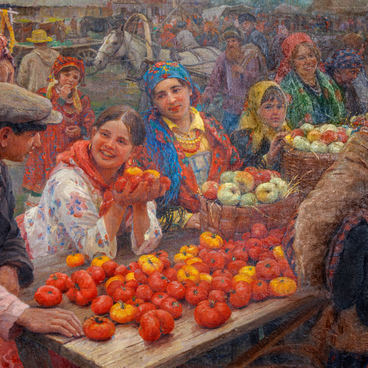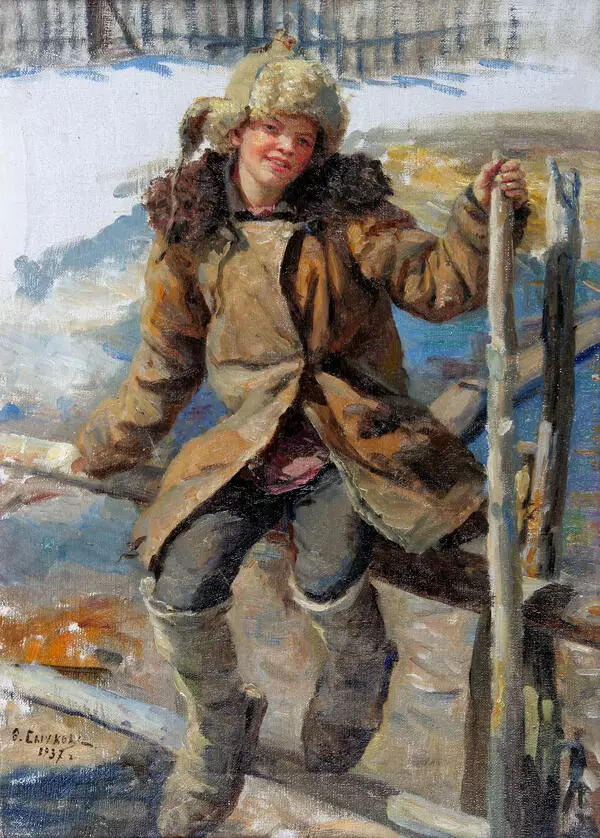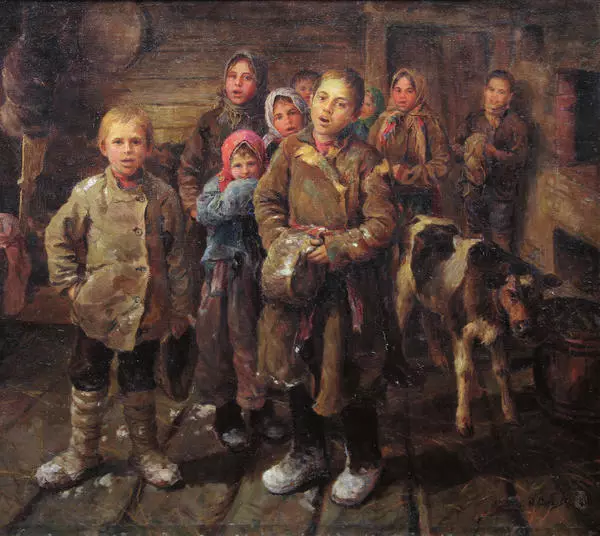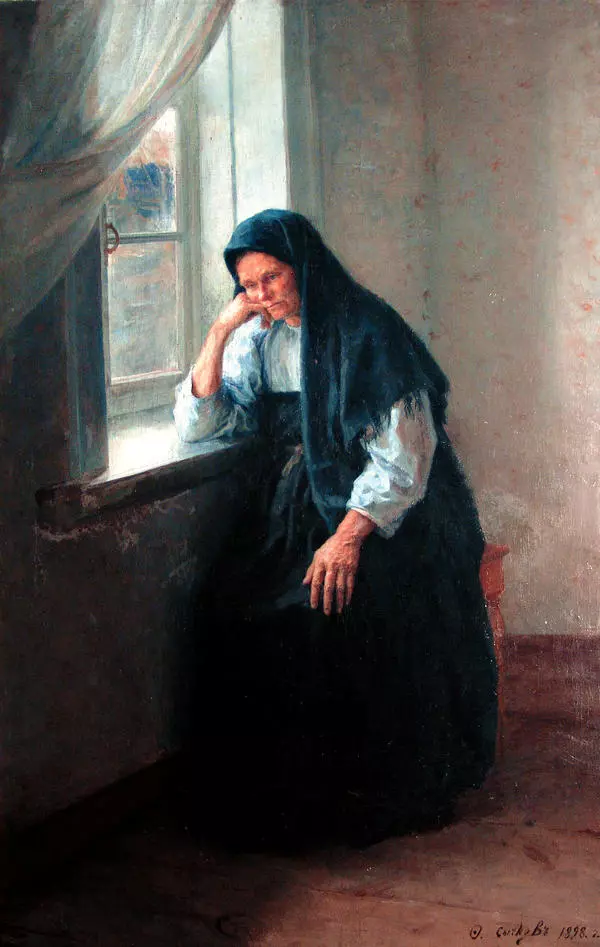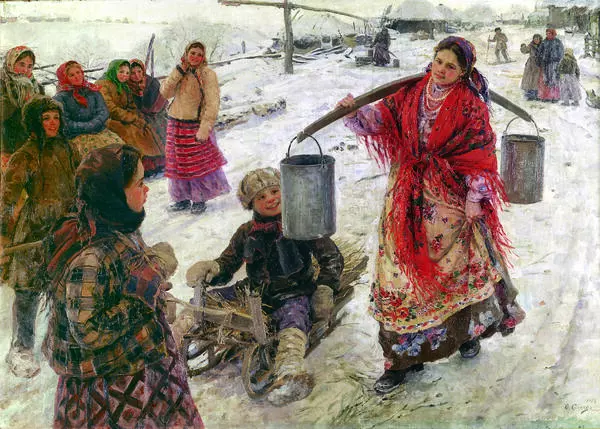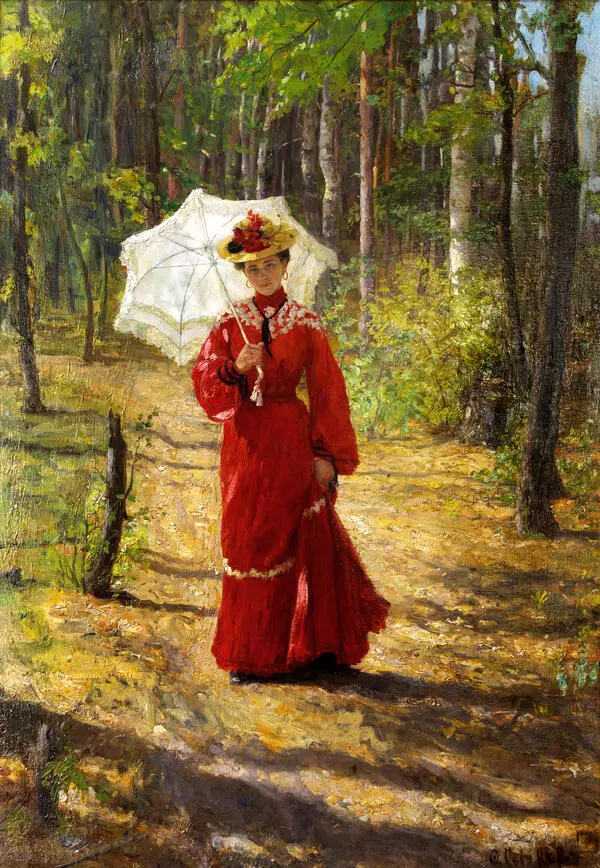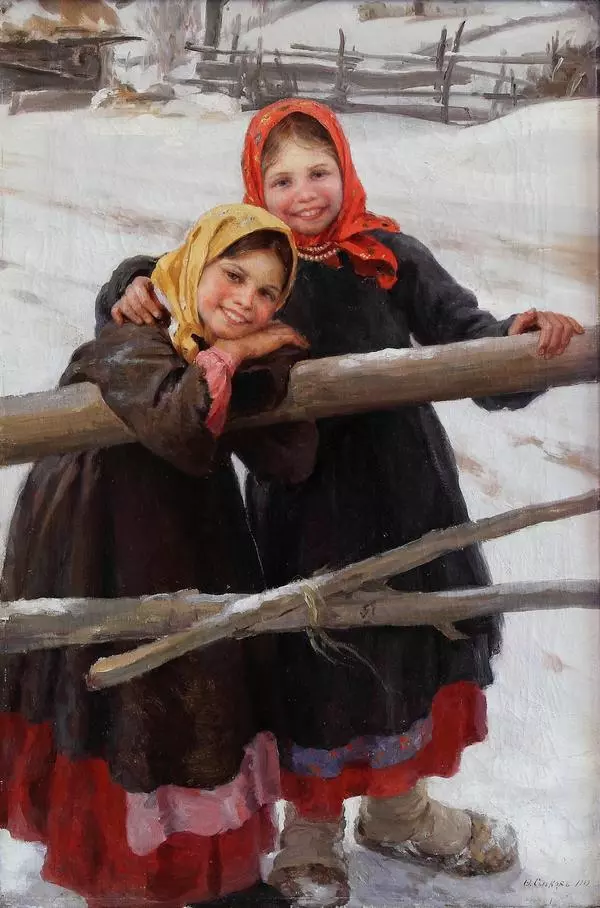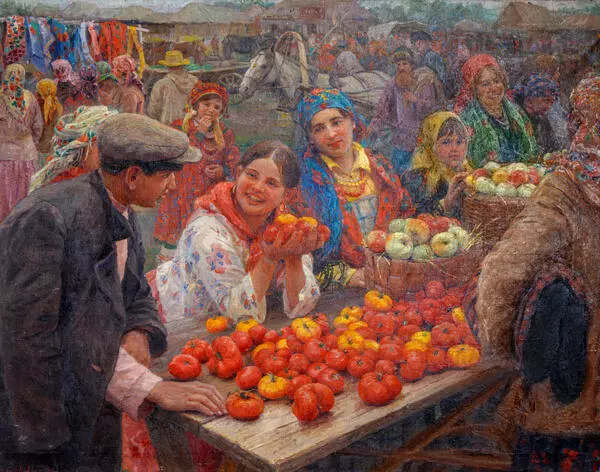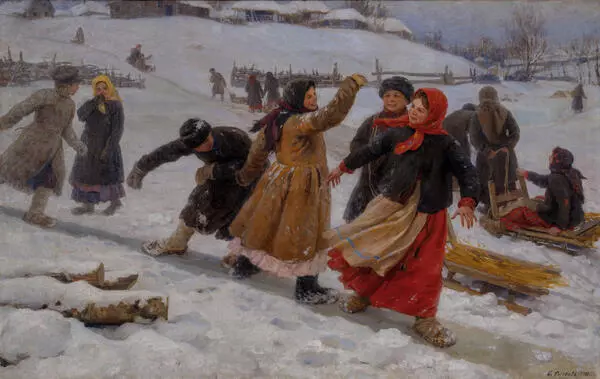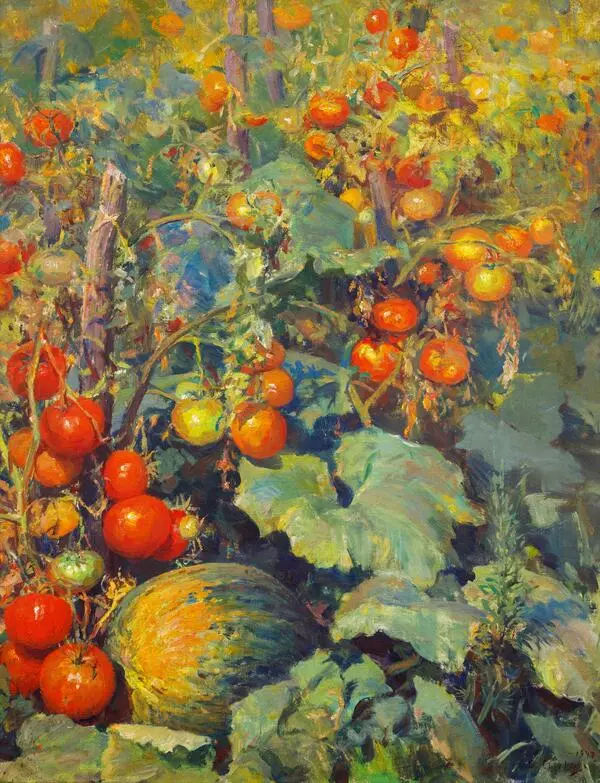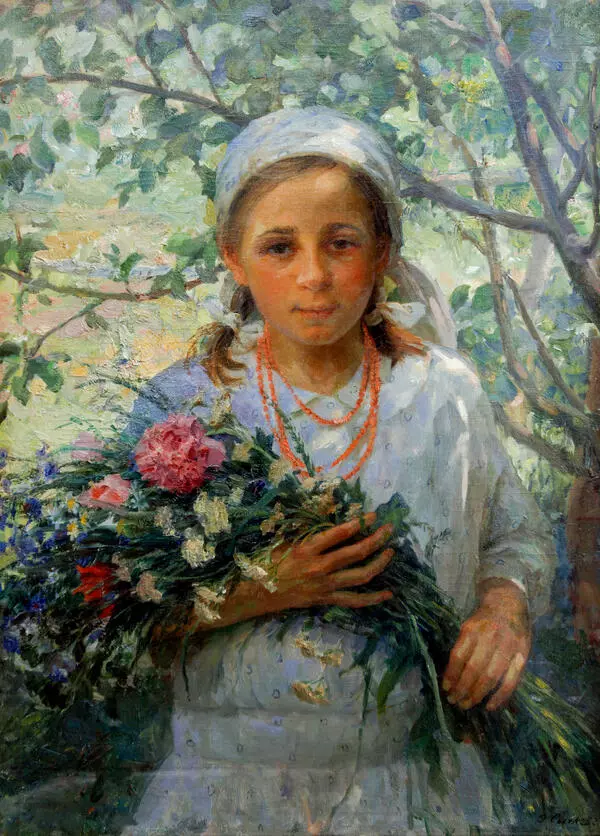In the painting ‘Moksha River Overflowed’ the artist painted a spring flood. In the foreground, there is a river with large ice blocks. In the background, we can see a house with a thatched roof and two windows. Four children sit in front of the house and looking at the flood, as if captivated by the view.
Fedot Sychkov was primarily considered a master of everyday themes and genre portraits. He liked to depict his fellow villagers in their usual routine. However, his legacy also includes lyrical landscapes. In lyrical landscapes, painters do not only depict the scenery but also seek to convey their special attitude. The artists created poetic images of mighty trees, fields, hills with churches that evoked sadness or joy, hope or grief due to the choice of colors and composition. Over time, such landscapes became symbols of Russian nature. These include, for example, ‘Plyos’ by Isaac Levitan.
Fedot Sychkov dedicated lyrical landscapes to his native Kochelayevo. He depicted the local beauty in the paintings ‘Ice Drift’, ‘In Winter’, ‘On the River’. In his works, the artist never sought dramatic composition or lighting: he painted the scenery without drama, not embellishing reality. However, even the simplest motifs of his works look poetic because the author expressed his sincere love for his native places.
The early spring period is marked by a dramatic episode in Fedot Sychkov’s biography. At the age of 15, he had already been working without being paid for two years in the icon-painting workshop of D. A. Reshetnikov, in the city of Serdobsk. Because of the unbearable conditions, malnutrition, and bullying, he had to go home on foot in a torn jacket, with fifty kopeck coins and a slice of bread. In his autobiography, he wrote,
Fedot Sychkov was primarily considered a master of everyday themes and genre portraits. He liked to depict his fellow villagers in their usual routine. However, his legacy also includes lyrical landscapes. In lyrical landscapes, painters do not only depict the scenery but also seek to convey their special attitude. The artists created poetic images of mighty trees, fields, hills with churches that evoked sadness or joy, hope or grief due to the choice of colors and composition. Over time, such landscapes became symbols of Russian nature. These include, for example, ‘Plyos’ by Isaac Levitan.
Fedot Sychkov dedicated lyrical landscapes to his native Kochelayevo. He depicted the local beauty in the paintings ‘Ice Drift’, ‘In Winter’, ‘On the River’. In his works, the artist never sought dramatic composition or lighting: he painted the scenery without drama, not embellishing reality. However, even the simplest motifs of his works look poetic because the author expressed his sincere love for his native places.
The early spring period is marked by a dramatic episode in Fedot Sychkov’s biography. At the age of 15, he had already been working without being paid for two years in the icon-painting workshop of D. A. Reshetnikov, in the city of Serdobsk. Because of the unbearable conditions, malnutrition, and bullying, he had to go home on foot in a torn jacket, with fifty kopeck coins and a slice of bread. In his autobiography, he wrote,

